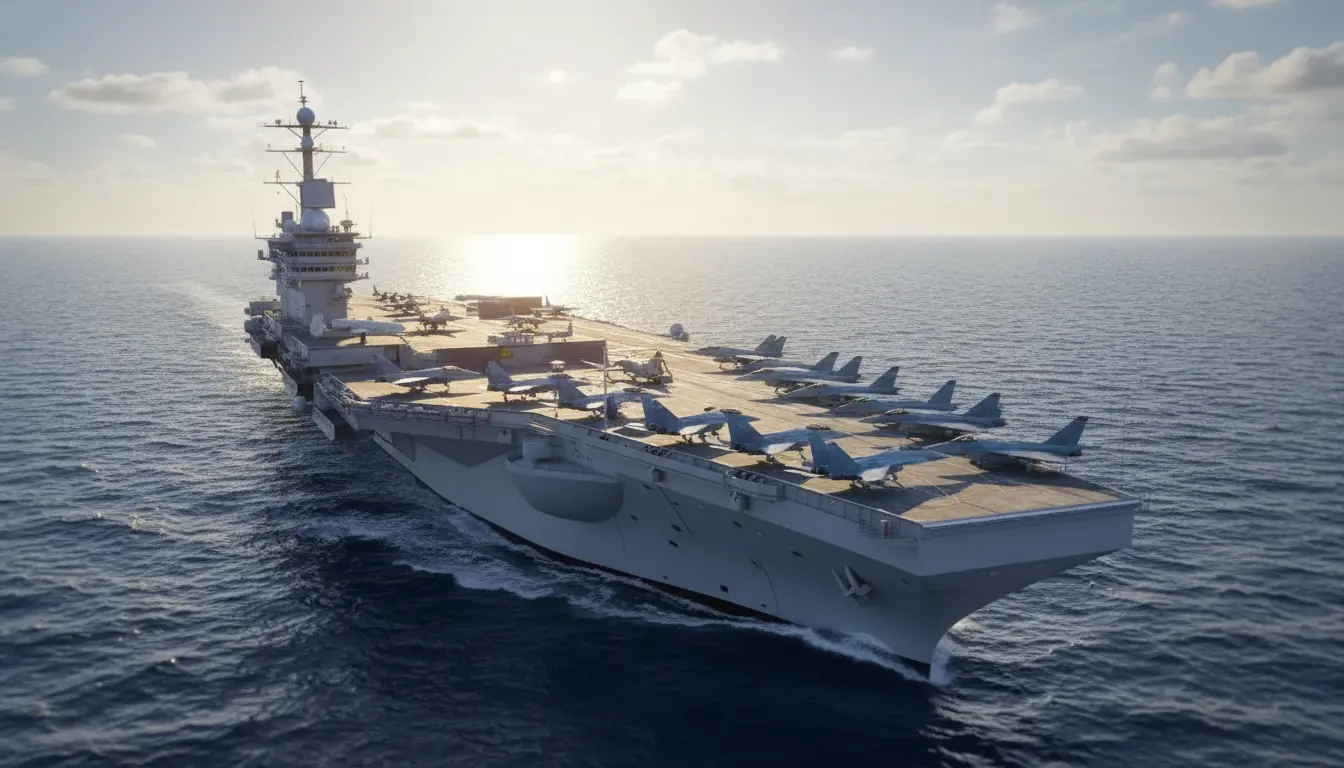Paris has thrown down the maritime gauntlet: the Next Generation Aircraft Carrier (PA-NG) will soon become not only France’s flagship but the most formidable warship in Europe. Rivals—take note.
Bigger, Bolder, French-er: The PA-NG Steps In
The PA-NG project marks a decisive leap in the evolution of the French Navy. Designed to meet today’s naval challenges, this ship is gearing up to grab a few headlines—and maybe a few admirals’ heart rates—by becoming Europe’s largest warship and one of the most imposing worldwide. Scheduled to join the fleet in 2038, the PA-NG is destined to intensify France’s maritime presence while answering a host of international strategic challenges. That’s not just a bigger boat; that’s a statement.
The Dream Team: Building the Giant in Saint-Nazaire
This floating titan is the product of a robust partnership. The Naval Group and Chantiers de l’Atlantique split the responsibilities, with the former owning 65% of the project and the latter 35%. Where does the magic happen? In Saint-Nazaire, the steel-clad heart of French shipbuilding. If you’re searching for naval tradition, look no further. And it’s not just about hulls and decks: TechnicAtome joins the endeavor, masterminding the ship’s nuclear propulsion. In short, three of France’s heavyweights are lining up to propel this audacious vision off the drawing board and onto the waves.
The timeline is not for the faint of heart. The official order for the PA-NG is expected by the end of 2025, with delivery planned for 2038. The French aren’t leaving much wiggle room—or excuses for delay—which speaks volumes about both the military and economic significance of the project. Procrastinators need not apply.
Colossus on the Water: Specs to Turn Heads
This juggernaut will be 310 meters long (that’s roughly three football fields end to end, but who’s counting?) and sport a flight deck 85 meters wide. At full load, the ship tips the scales at 78,000 tonnes—a true oceanic heavyweight champion. Onboard, 1,100 souls will keep things humming, divided as follows:
- 600 from the embarked air group,
- 100 officers overseeing operations,
- 200 additional specialists keeping things running ship-shape.
Propulsion comes courtesy of two K22 nuclear reactors, each at 220 MW, translating into a top speed of 50 km/h. That’s not just fast, it’s brisk enough for serious operational flexibility—a must for a ship projecting power on behalf of a nation.
The PA-NG’s intended airborne arsenal is no less impressive. Expect around 40 aircraft, including the Rafale Marine fighter jets (and their successors, who by 2038 may be even sleeker), plus three E-2D Advanced Hawkeyes for airborne surveillance. Completing the fleet: NH90 Caïman Marine and H160 Guépard Marine helicopters. It’s a regular air show, but with a touch more gravitas.
Defensive Muscle and Future-Forward Tech
No mere sitting duck, the PA-NG will field an array of advanced systems to keep adversaries at bay. Defensive highlights include:
- Vertical launchers for Aster surface-to-air missiles, split across three eight-cell launchers on the port side,
- Four Bofors 40mm cannons ready for close-in protection,
- Simbad-RC surface-to-air systems with Mistral 3 missiles for robust aerial defense.
The innovation isn’t skin-deep: at the heart of the flight deck, Electromagnetic Aircraft Launch Systems (EMALS) will hurl up to 35-tonne aircraft into the sky. These EMALS catapults boast a 105-meter advantage over the old-school C13-3s, which should delight both pilots and engineers. For eyes and ears, Thales’ Sea Fire radar with four fixed panels delivers cutting-edge detection capability. If you want to know what’s flying or floating nearby, this ship will know first.
The transition to the PA-NG will be gentle rather than abrupt. The venerable Charles de Gaulle, serving since 2001, will gradually hand over the reins. Plans call for the PA-NG to reach Toulon in 2035 to be loaded with nuclear fuel, followed by sea trials in 2036. Meanwhile, the Charles de Gaulle will receive upgrades to ensure a seamless operational handover. Out with the old? More like passing the torch with a handshake.
Conclusion: As France pulls the curtain back on its cutting-edge carrier, the next era of European naval presence comes into view—with plenty of muscle, ingenuity, and a distinctive French accent. For anyone monitoring the horizon, the message is clear: the future of maritime power in Europe will be measured in French metres…and megawatts. Watch this space, because the PA-NG saga is just getting started.

John is a curious mind who loves to write about diverse topics. Passionate about sharing his thoughts and perspectives, he enjoys sparking conversations and encouraging discovery. For him, every subject is an invitation to discuss and learn.






